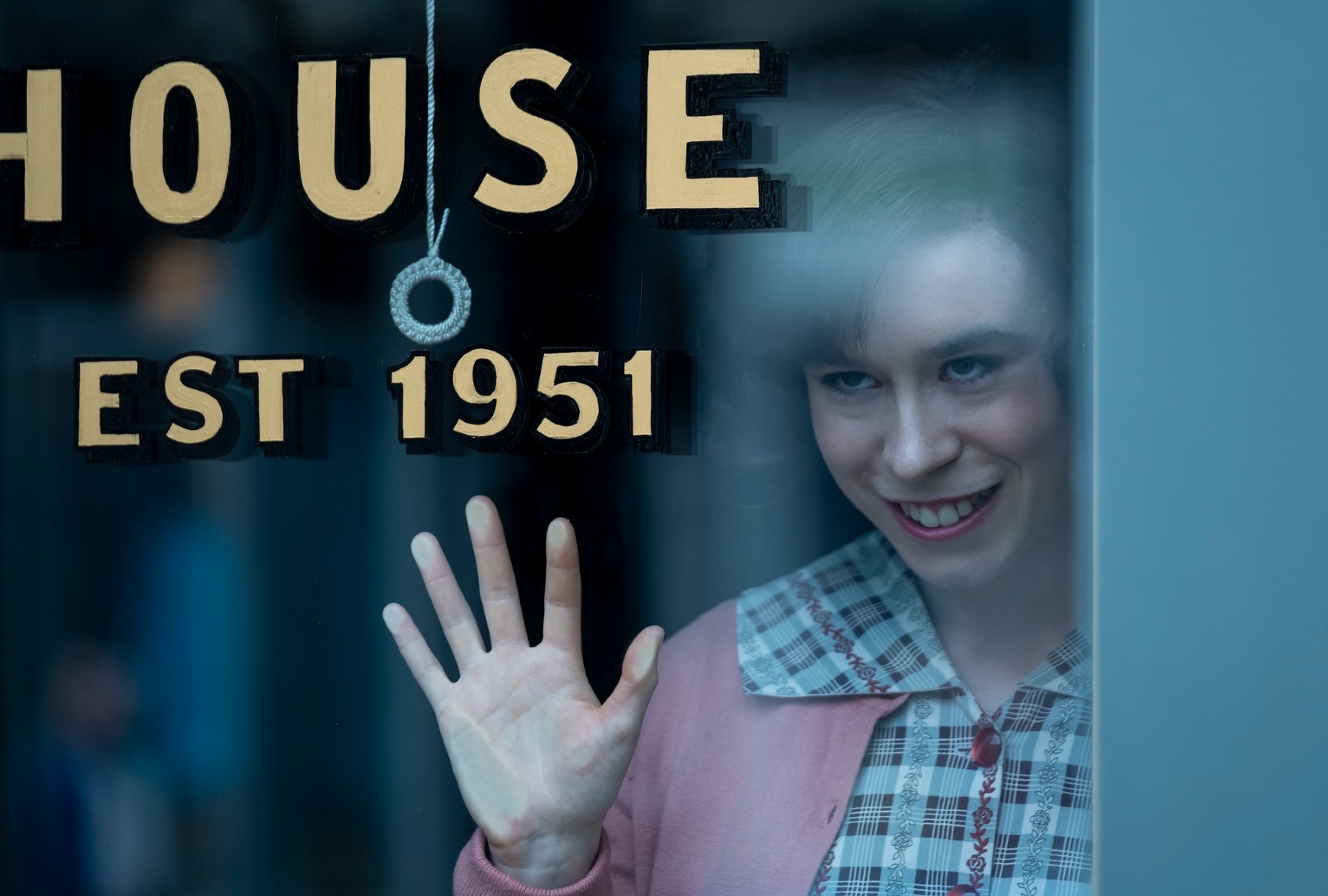Much of what is commonly known about Derry, Maine, is based on feeling. Yet, beneath Stephen King’s fictional history lies a sharper argument: Derry’s evil, particularly in “It,” serves as a metaphor for how fear and its consequences shape communities — both fictional and real. King’s fans know the town’s lore based on side tours detailed in “Insomnia,” “Dreamcatcher” and “11/22/63,” which deepen the mythos and ground Derry alongside real places like Bangor, Maine, the author’s inspiration.
Getting there, though, requires being in touch with your inner dread. Key events in “It” are extraordinarily fantastical, but they’re fueled by everyday fears. So it goes in “It: Welcome to Derry,” the latest expansion of the town’s canon from Argentine director Andy Muschietti and Barbara Muschietti, his sister and producer.
The pair’s feature films update the story for a new generation, moving the timelines from the novel’s late ‘50s setting into the ‘80s for the chapters covering the protagonists’ childhoods, captured in 2017’s “It,” and jumping the events of 2019’s “It: Chapter Two” to 2016, when they regroup as adults to battle the wickedness they confronted when they were kids.
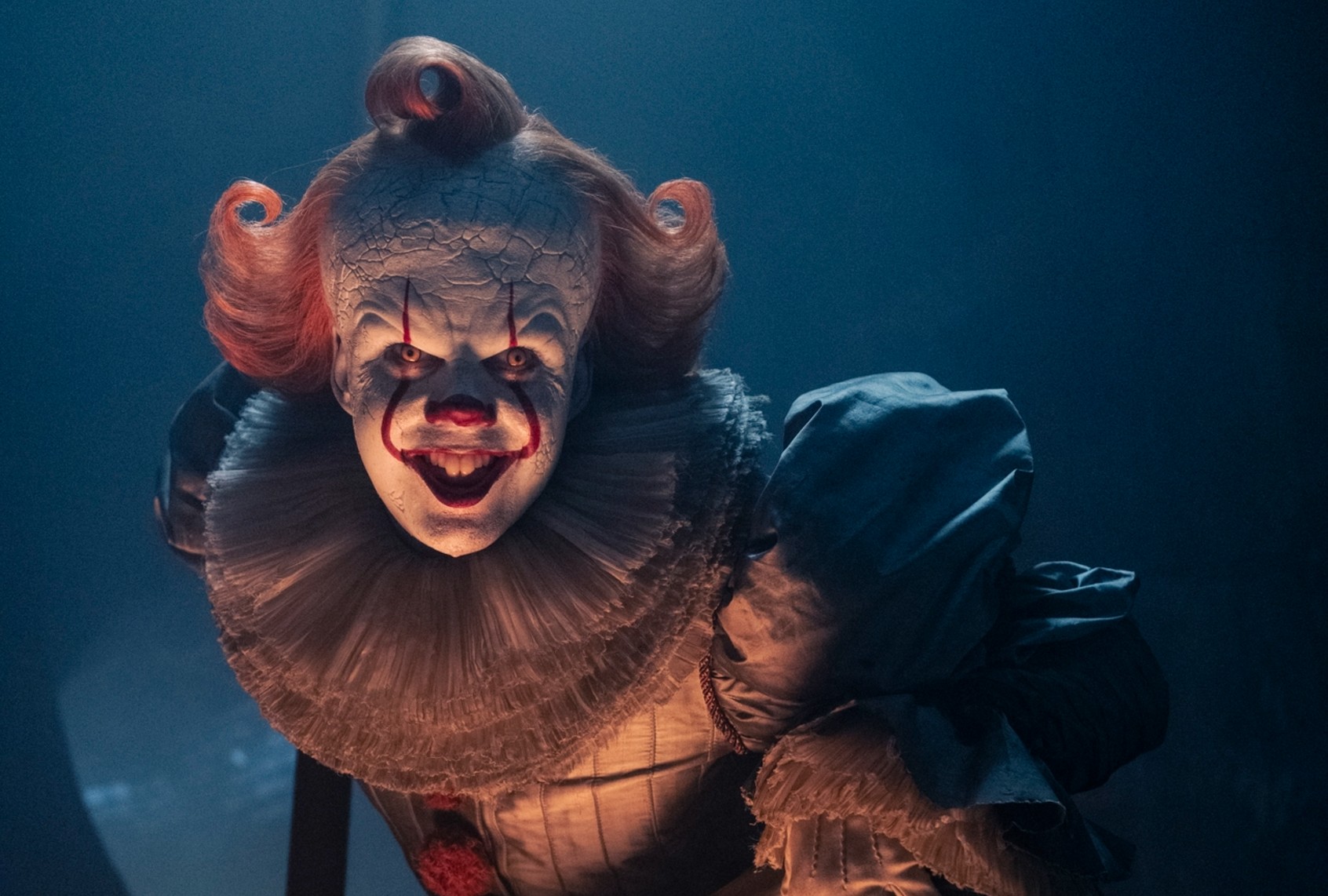
(Brooke Palmer/HBO) Bill Skarsgård in “It: Welcome to Derry”
What doesn’t change with the times is that “It” is synonymous with its star antagonist, Pennywise, the sinister clown that terrorizes Derry. Pennywise embodies an ancient malice that surfaces every 27 years to prey on children for anywhere between a few months and a year and a half or more. He’s never entirely defeated, making him an apt metaphor for society’s largest ills.
To that end, before “Welcome to Derry” resurfaces the internet’s favorite scary clown, it foregrounds the ways that small-town charm can be an effective mask for the mundane evils we confront every day.
“We keep on coming back to Derry because Derry is synonymous with the country,” Barbara told Salon in a recent interview. “It’s a reflection of whatever is going on in any town in America.”
“Welcome to Derry” joins a library of King’s made-for-TV adaptations that were met with a mixture of reactions — some acclaimed, like “Castle Rock,” and others embraced by fervently devoted if small audiences. Many fell short of the hopes held by the author’s faithful. And in most of these cases, the primary attraction, King’s canon, also becomes the concrete boots dragging down a script.
Helpfully, King hasn’t written any books specifically about Derry, granting the Muschiettis and co-showrunners Brad Caleb Kane and Jason Fuchs relative freedom to tease out what Andy describes as the book’s enigmas.
“In many ways, even though we’re taking characters from King canon, it’s fresh snow,” Kane said in a separate interview. “What we went to in the text was less the text itself and more the thematics that are inherent in the text.”
Specifically, he continued, “Those thematics are, I believe, the weaponization of fear. The use of fear as a tool to divide, to conquer, to consume, to pacify in order to gain power.”
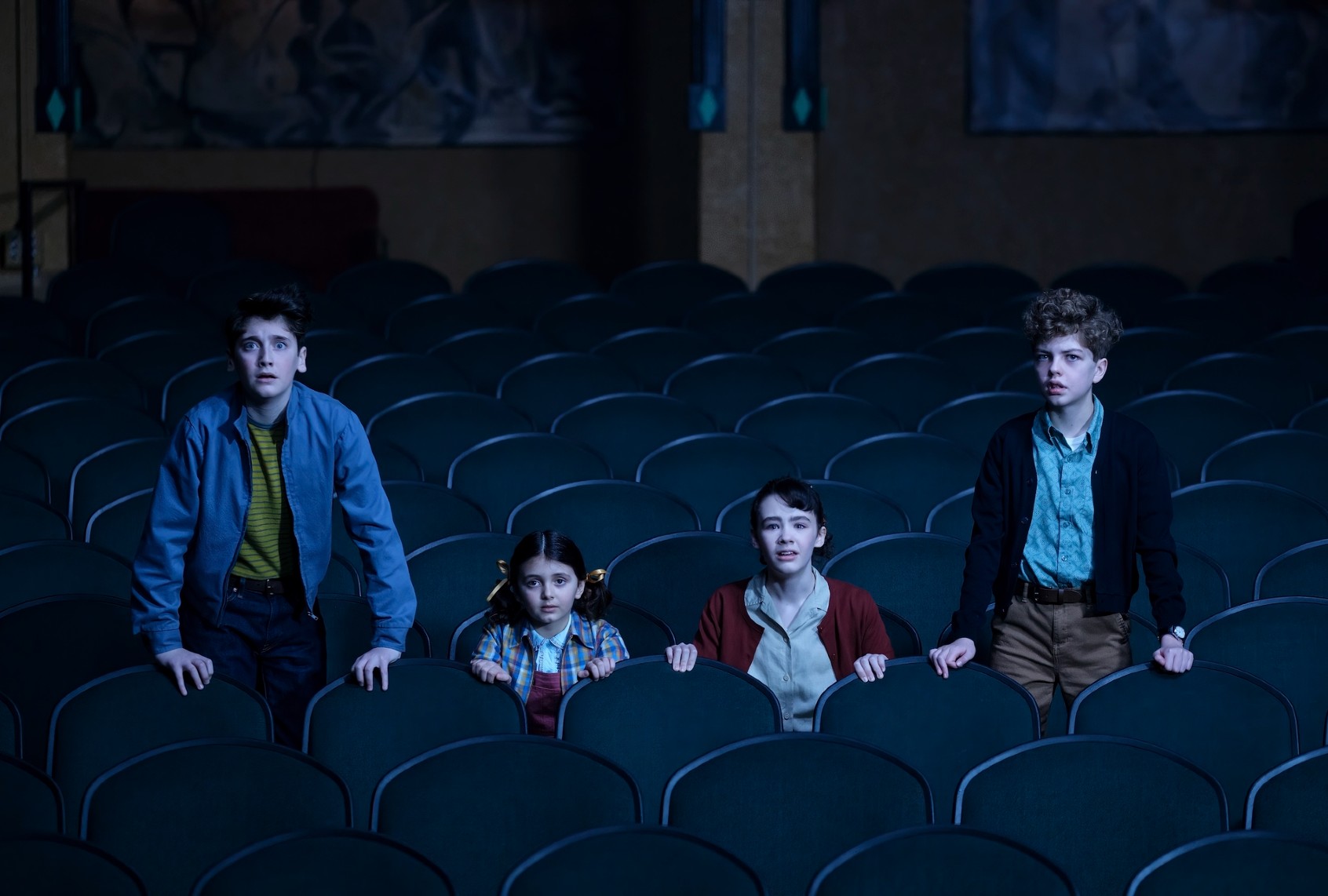
(Brooke Palmer/HBO) L to R: Jack Molloy Legault, Matilda Legault, Clara Stack and Mikkal Karim-Fidler in “It: Welcome to Derry”
Before the show resurfaces the internet’s favorite scary clown, it foregrounds the ways that small-town charm can be an effective mask for the mundane evils we confront every day.
Pennywise’s terror campaign is the text, of course. The subtext plays out in how the town confronts the other corruptions in its midst. HBO has asked journalists writing about the show to refrain from making specific references to certain characters and their roles in the story, but the preview trailer reveals a version of Derry that’s more diverse than previous renderings.
For viewers who remember the 1990 miniseries, mentioning “It” brings to mind Tim Curry’s Pennywise. Bill Skarsgård’s version of the killer clown lorded over the Muschiettis’ more recent cinematic interpretations, inspiring memes setting his unnerving, hyper-speed dance to an array of pop tunes. Skarsgård is an executive producer on “Welcome to Derry” alongside the Muschiettis, but the producers and writers keep his clown’s sinister grin behind the curtain for a while to establish the workings of this corner of the regular world. With a story like this, it’s easy to be distracted by the monster instead of what it represents.
Fuchs hopes viewers also recognize the ways that fear desensitizes Derry townsfolk to the horrors in their midst. “One of the themes of the show is that there are certain things worth being horrified over, that horror is itself the appropriate reaction to those things,” he said. “And in a town where people seem not horrified at all by the plainly horrifying, that felt like an interesting, dramatic journey, and something that speaks not just to the truth of life in 1962 but the truth of life to this day.”
There are plenty of everyday things to be afraid of in the thriller’s version of 1962. Long before its young heroes think about creeping through the sewers, nightmares confront them in broad daylight. Some of the town’s adults face them too.
We need your help to stay independent
Derry is a town supported by blue-collar factory jobs that come with the risk of nasty industrial accidents. With a military base situated nearby, the threat of a nuclear attack hangs over the place like a nasty cumulus cloud. Denizens who behave erratically may be sent off to a nearby asylum. Suspected lawbreakers shuffled to Shawshank prison may not live to see their day in court.
But what scares the townsfolk most are outsiders, especially newcomers like the Hanlons – the forbears of “It” hero Mike Hanlon, the sole Black kid in town in King’s book, who grows up to be Derry’s head librarian and historian.
His grandfather Leroy (Jovan Adepo), an Air Force major freshly returned from the Korean War, moves to the town along with his buddy Captain Pauly Russo (Rudy Mancuso), seeking a domestic posting where his wife, Charlotte (Taylour Paige), and their brainy son, Will (Blake Cameron James), can live peacefully. Leroy’s superior, General Shaw (James Remar), calls on his extraordinary talents to assist with a project nebulously described as “special operations,” where he’ll work with Shaw’s trusted man Dick Hallorann (Chris Chalk).
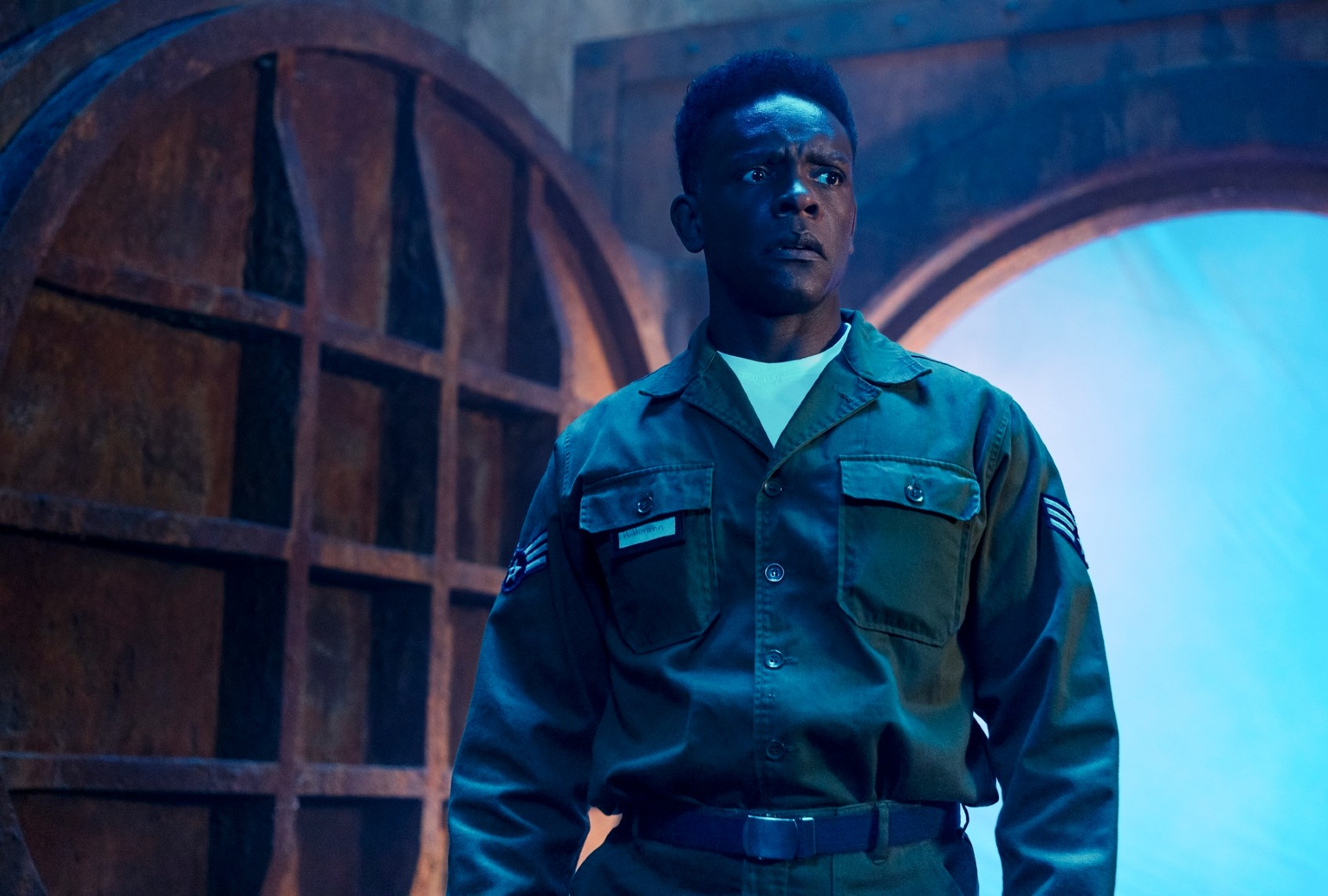
(Brooke Palmer/HBO) Chris Chalk in “It: Welcome to Derry”
That character’s name should light a few flares for anyone familiar with King’s work. Dick Hallorann is one of the most famous heroes in this mythos, making his first film appearance in Stanley Kubrick’s 1980 version of “The Shining” (played by Scatman Crothers), a role later reprised by Melvin Van Peebles in the 1997 miniseries. He was also played by Carl Lumbly in 2019’s “Doctor Sleep.” This means Chalk and the “Welcome to Derry” writers are taking on a ponderous mantle since Dick is both extremely beloved and a prime embodiment of King’s problematic history with Black characters.
“It’s tragically relevant, I think, in a time like this, where we thought the masses were aware of how the powers that be use fear and division for their own profit.”
Thankfully, this show depicts Dick and his relationship with the Hanlons with a depth that Chalk expands through a performance crackling with quiet power. Both he and the Hanlons evoke the complexities within Derry’s small, tight marginalized communities, and their goals aren’t always aligned. The Muschiettis, as well as Kane and Fuchs, credit Emmy and Oscar winner Cord Jefferson (of “Watchmen” and “American Fiction”) for informing these roles.
In addition to lending primacy to the Hanlons’ perspectives, “Welcome to Derry” also takes viewers inside the Indigenous community pushed to the town’s outskirts to explore their relationship to the diabolism known as It. After all, the abomination living under Derry pre-dates the town’s founding.
Start your day with essential news from Salon.
Sign up for our free morning newsletter, Crash Course.
The Muschiettis have a three-season plan for “Welcome to Derry,” with the potential second to be set in 1935 and the third rewinding to 1908. This season is a basket of Easter Eggs that includes details of possible storylines sprinkled throughout. But Andy Muschietti has a clear view of the show’s thematic pathway. Where this season is about the weaponization of fear, he says the second would take on the weaponization of faith.
“It’s tragically relevant, I think, in a time like this, where we thought the masses were aware of how the powers that be use fear and division for their own profit. It’s alarming,” he said. “But I think this, in the best case, will serve as a reminder for people to be aware.”
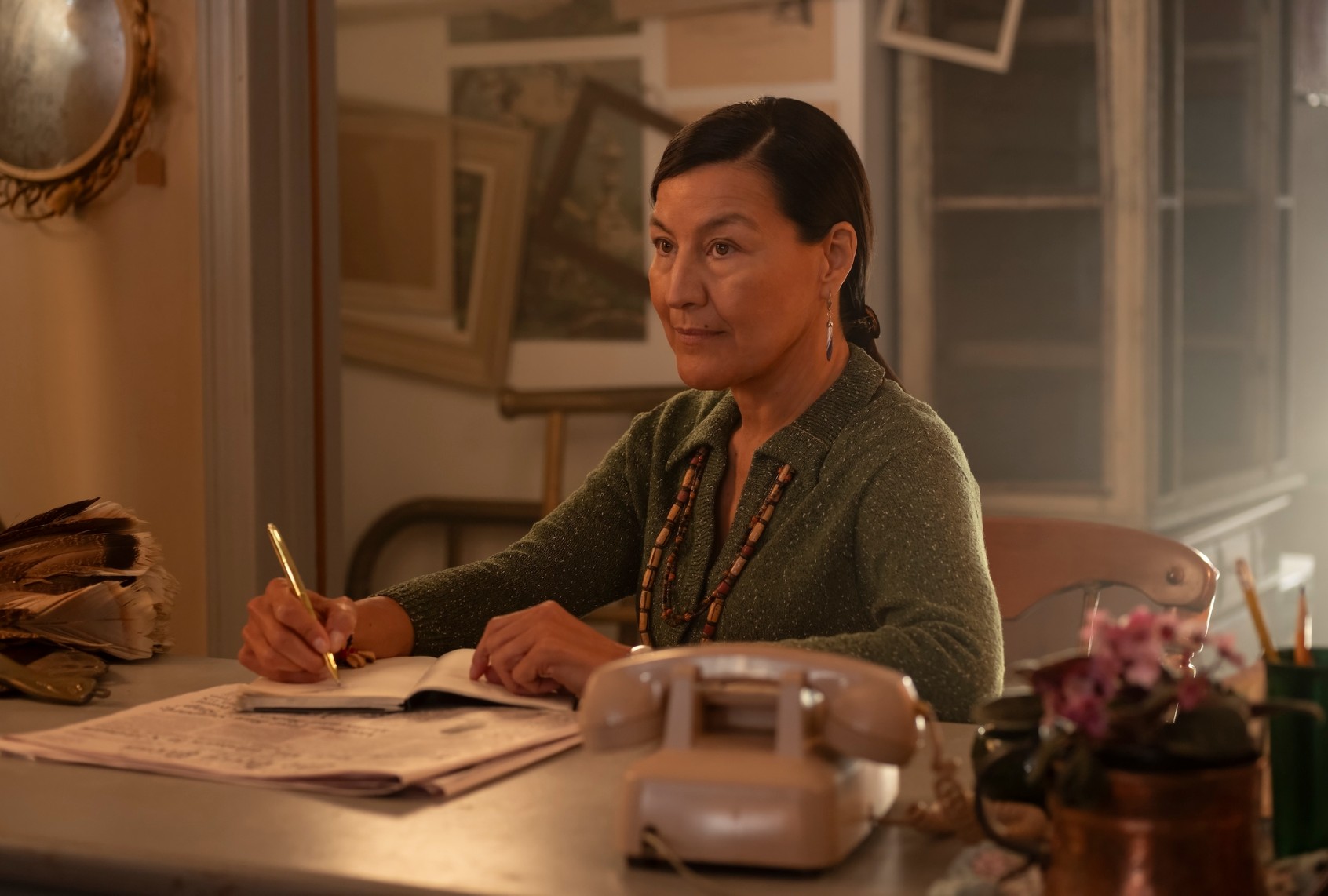
(Brooke Palmer/HBO) Kimberly Guerrero in “It: Welcome to Derry”
Fuchs hopes the audience also grabs hold of the light cutting through Derry’s darkness. “These are characters who are outsiders, who are made to feel alone, who It tries to divide and terrorize into being divided,” he said. “Without spoiling where it goes, it’s a story about people realizing they’re not alone — that the terror they are afraid they’re imagining is real, and that if they work together and believe in each other and love each other, that extraordinary things are possible. Even in the face of tremendous evil, whether it’s the locals or something interdimensional like It.”
Fuchs added that those ideals, the power of love and unified belief in the face of abject horror, are what drew him to the book and made him fall for the movies. “And I hope that if people enjoy this and take that away [from watching], that’s a worthwhile thing to put out into the storytelling universe.”
“IT: Welcome to Derry” premieres at 9 p.m. Sunday, Oct. 26 on HBO and streams on HBO Max.
Read more
about the Stephen King Universe
